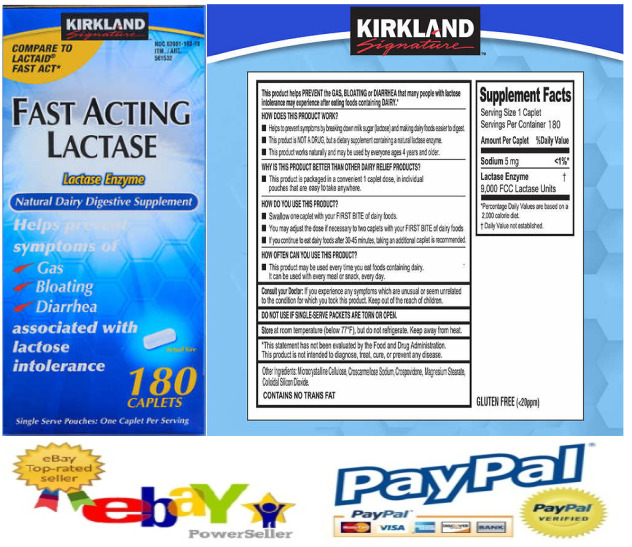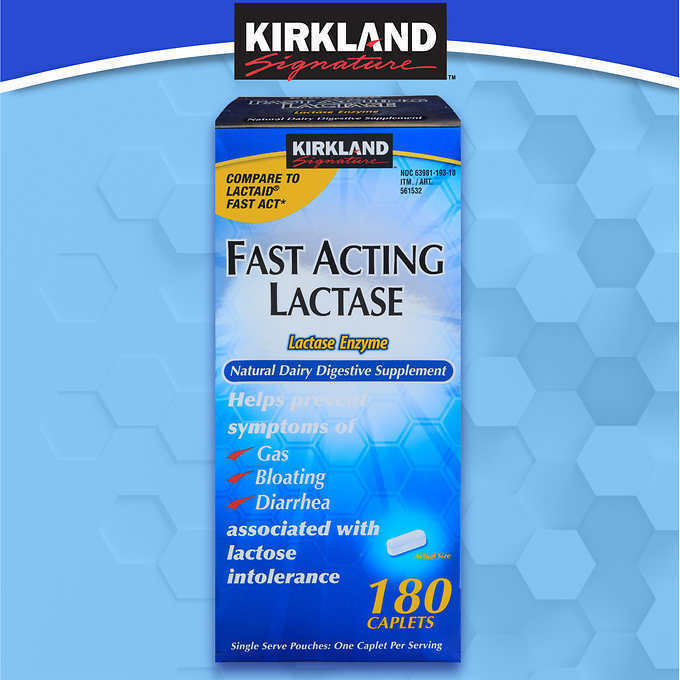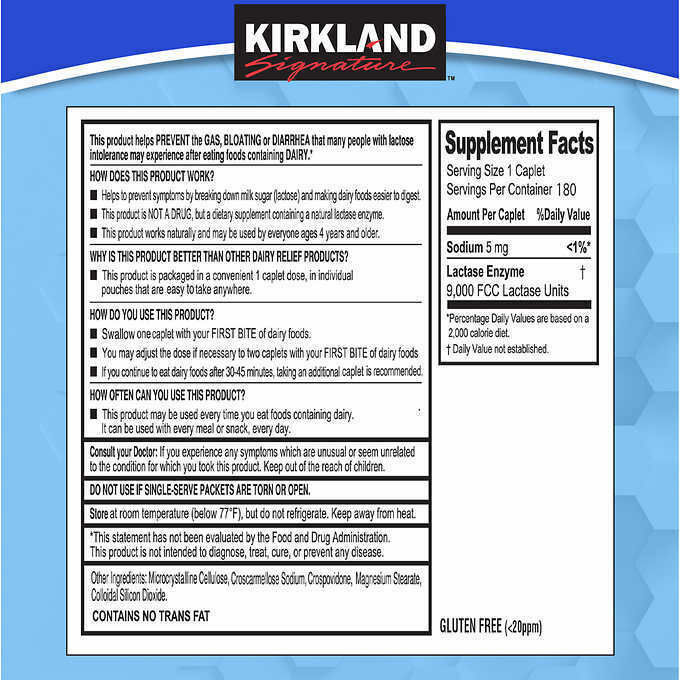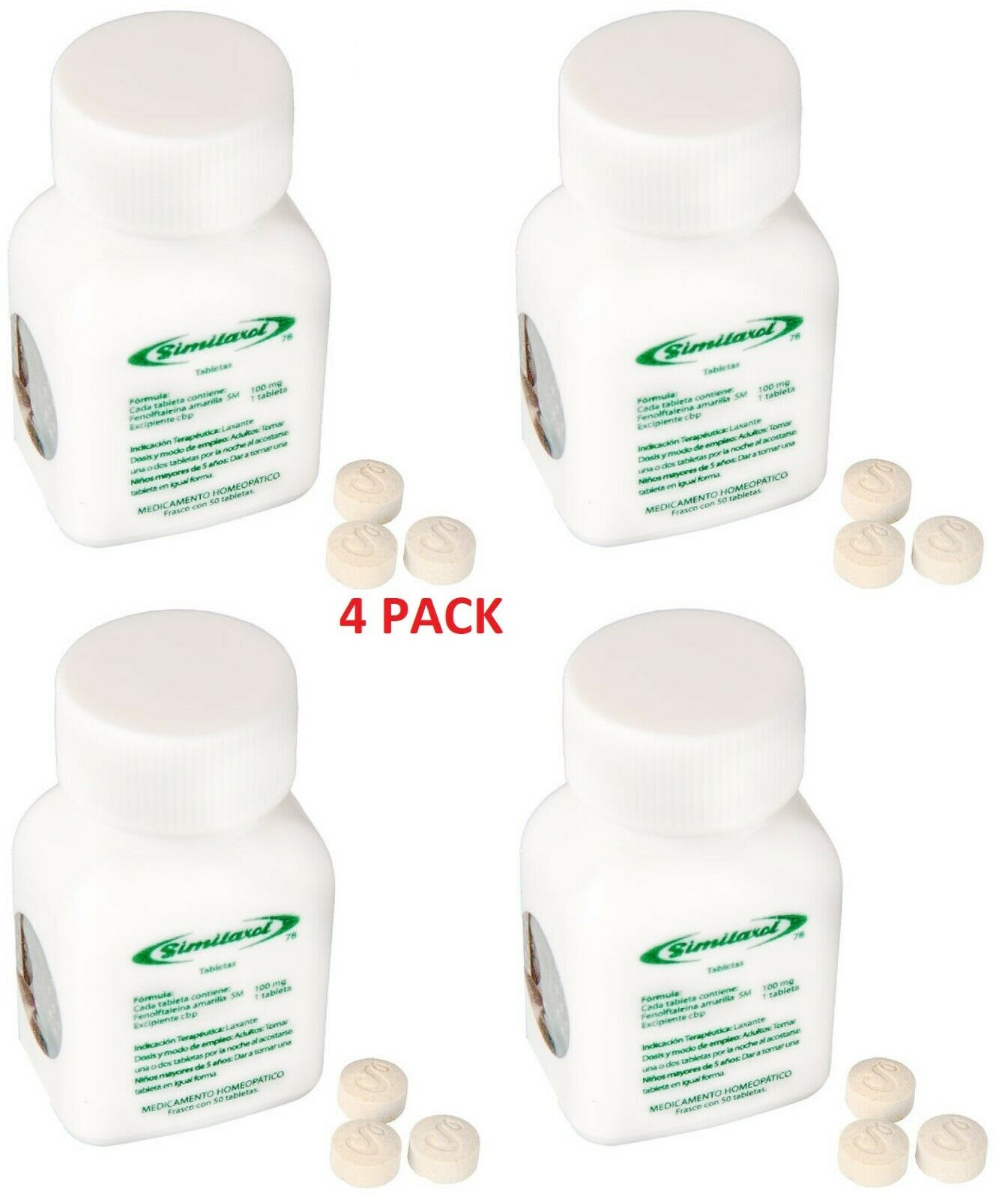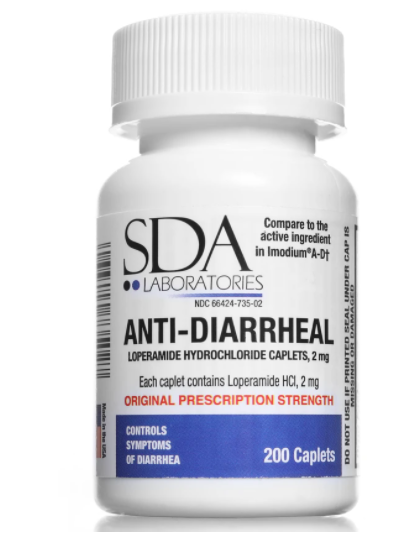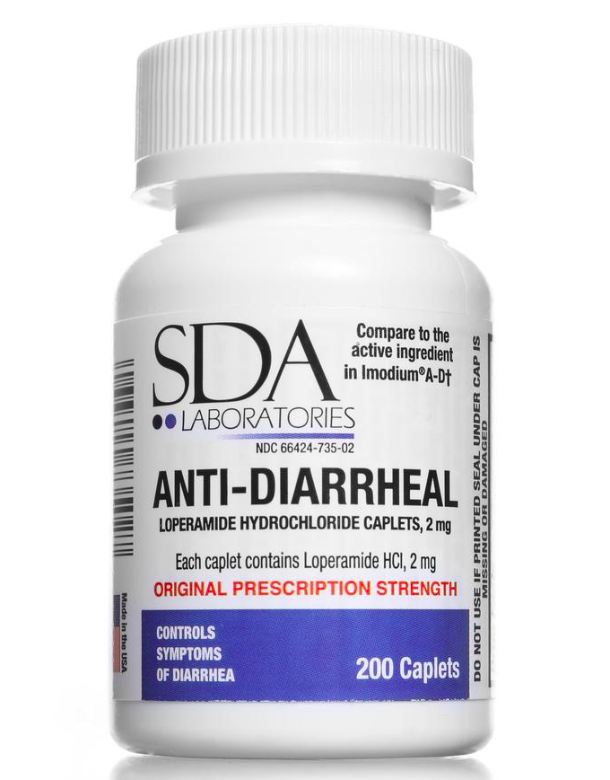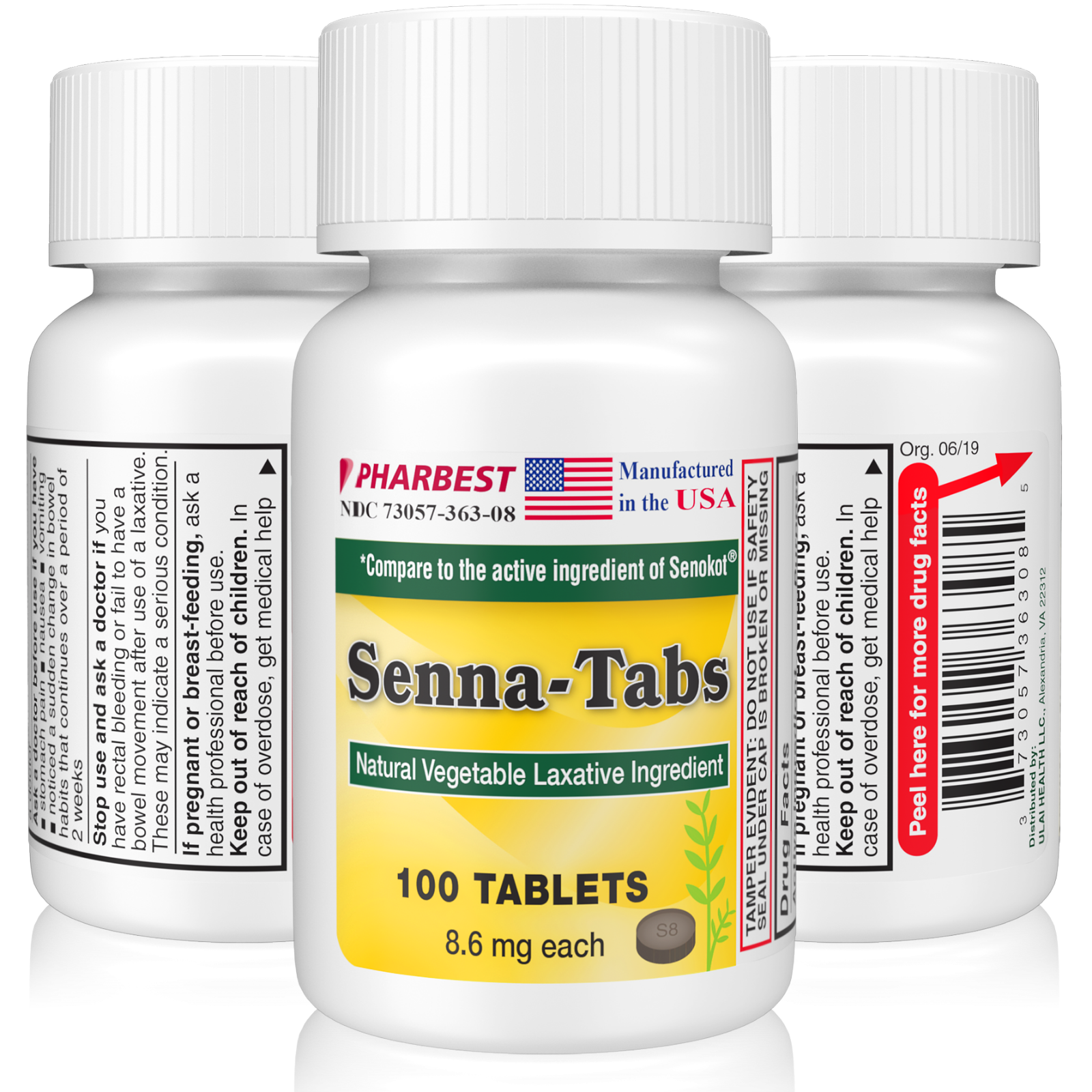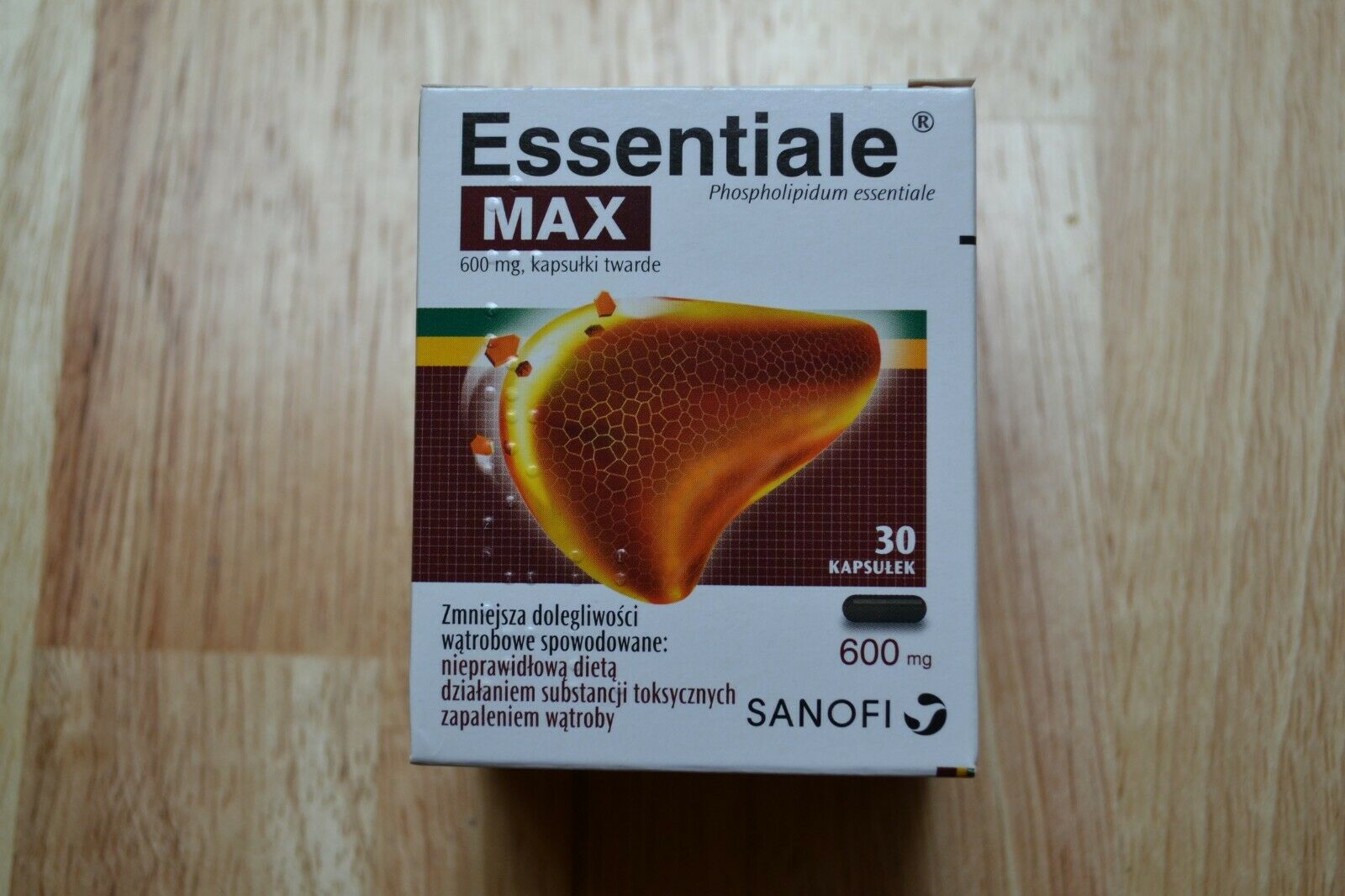-40%
Kirkland Signature Fast Acting Lactase, 180 Caplets ***NEW***
$ 11.58
- Description
- Size Guide
Description
Kirkland Signature Fast Acting Lactase, 180 Caplets
Kirkland Signature Fast Acting Lactase Caplets helps prevent the gas, bloating & diarrhea associated with lactose intolerance.
Kirkland Signature Fast Acting Lactase Caplets are individually packaged in a convenient 1 caplet dose that’s easy to take with you!
Understanding Lactose Intolerance
What is lactose intolerance?
People with lactose intolerance are unable to fully digest the sugar (lactose) in milk. As a result, they have diarrhea, gas and bloating after eating or drinking dairy products. The condition, which is also called lactose malabsorption, is usually harmless, but its symptoms can be uncomfortable. A deficiency of lactase — an enzyme produced in your small intestine — is usually responsible for lactose intolerance. Many people have low levels of lactase but are able to digest milk products without problems. If you're actually lactose intolerant, though, your lactase deficiency leads to symptoms after you eat dairy foods. Most people with lactose intolerance can manage the condition without having to give up all dairy foods.
What are some of the symptoms of lactose intolerance?
The signs and symptoms of lactose intolerance usually begin 30 minutes to two hours after eating or drinking foods that contain lactose. Common signs and symptoms include:
Diarrhea, Nausea and sometimes Vomiting
Abdominal cramps
Bloating
Gas
What causes intolerance?
Lactose intolerance occurs when your small intestine doesn't produce enough of an enzyme (lactase) to digest milk sugar (lactose). Normally, lactase turns milk sugar into two simple sugars — glucose and galactose — which are absorbed into the bloodstream through the intestinal lining. If you're lactase deficient, lactose in your food moves into the colon instead of being processed and absorbed. In the colon, normal bacteria interact with undigested lactose, causing the signs and symptoms of lactose intolerance. There are three types of lactose intolerance. Different factors cause the lactase deficiency underlying each type.
Primary lactose intolerance
This is the most common type of lactose intolerance. People who develop primary lactose intolerance start life producing plenty of lactase — a necessity for infants, who get all their nutrition from milk. As children replace milk with other foods, their lactase production normally decreases, but remains high enough to digest the amount of dairy in a typical adult diet. In primary lactose intolerance, lactase production falls off sharply, making milk products difficult to digest by adulthood. Primary lactose intolerance is genetically determined, occurring in a large proportion of people with African, Asian or Hispanic ancestry. The condition is also common among those of Mediterranean or Southern European descent.
Secondary lactose intolerance
This form of lactose intolerance occurs when your small intestine decreases lactase production after an illness, injury or surgery involving your small intestine. Among the diseases associated with secondary lactose intolerance are celiac disease, bacterial overgrowth and Crohn's disease. Treatment of the underlying disorder may restore lactase levels and improve signs and symptoms, though it can take time.
Congenital or developmental lactose intolerance
It's possible, but rare, for babies to be born with lactose intolerance caused by a complete absence of lactase activity. This disorder is passed from generation to generation in a pattern of inheritance called autosomal recessive, meaning that both the mother and the father must pass on the same gene variant for a child to be affected. Premature infants may also have lactose intolerance because of an insufficient lactase level.
What makes people more prone to having lactose intolerance?
Factors that can make you or your child more prone to lactose intolerance include:
Increasing age. Lactose intolerance usually appears in adulthood. The condition is uncommon in babies and young children.
Ethnicity. Lactose intolerance is most common in people of African, Asian, Hispanic and American Indian descent.
Premature birth. Infants born prematurely may have reduced levels of lactase because the small intestine doesn't develop lactase-producing cells until late in the third trimester.
Diseases affecting the small intestine. Small intestine problems that can cause lactose intolerance include bacterial overgrowth, celiac disease and Crohn's disease.
Certain cancer treatments. If you have received radiation therapy for cancer in your abdomen or have intestinal complications from chemotherapy, you have an increased risk of lactose intolerance.
Tips to Reduce the Symptoms of Lactose Intolerance
There's currently no way to boost your body's production of lactase, but you can usually avoid the discomfort & minimize the symptoms of lactose intolerance by:
Avoiding large servings of milk and other dairy products
Including small servings of dairy products in your meals
Eating and drinking lactose-reduced ice cream and milk
Drinking regular milk after you add a liquid or powder to it to break down the lactose
Choosing smaller servings of dairy. Sip small servings of milk, up to 4 ounces (118 milliliters) at a time. The smaller the serving, the less likely it is to cause gastrointestinal problems.
Saving milk for mealtimes. Drink milk with other foods. This slows the digestive process and may lessen symptoms of lactose intolerance.
Experimenting with an assortment of dairy products. Not all dairy products have the same amount of lactose. For example, hard cheeses, such as Swiss or cheddar, have small amounts of lactose and generally cause no symptoms. You may be able to tolerate cultured milk products, such as yogurt, because the bacteria used in the culturing process naturally produce the enzyme that breaks down lactose.
Buying lactose-reduced or lactose-free products. You can find these products at most supermarkets in the refrigerated dairy section.
Using Kirkland Signature Fast Acting Lactase Caplets. Kirkland Signature Fast Acting Lactase Caplets contain lactase enzyme to help you digest dairy products. You can take caplets with the first bite of a meal or snack.
Most people with lactose intolerance can enjoy some milk products without symptoms. It may be possible to increase your tolerance to dairy products by gradually introducing them into your diet. Some people find that they can tolerate full-fat dairy products, such as whole milk and cheese, more easily than dairy products with no fat or reduced fat.
With some trial and error, you may be able to predict your body's response to different foods containing lactose and figure out how much you can eat or drink without discomfort. Few people have such severe lactose intolerance that they have to cut out all milk products or be wary of nondairy foods or medications that contain lactose.
Keep track of your daily servings of different dairy foods, including milk, ice cream, yogurt and cottage cheese, along with when you have them and what you eat with them. If you think you may have lactose intolerance, try cutting dairy products from your diet for a few days to see if your symptoms ease.
Make an appointment with your doctor if you frequently have symptoms of lactose intolerance after eating dairy foods, particularly if you're worried about getting enough calcium and vitamin D.
Dosing Information
Adults and children 4 years of age and over:
Swallow one caplet with your FIRST BITE of dairy foods. You may adjust the dose if necessary to two caplets with your FIRST BITE of dairy foods. If you continue to eat dairy foods after 30-45 minutes, taking an additional caplet is recommended. Kirkland Signature Fast Acting Lactase Caplets may be used every day, with every meal or snack containing dairy. Consult your doctor: If you experience any symptoms which are unusual or seem unrelated to the condition for which you took this product. Keep out of the reach of children. Read complete instructions on packaging before taking.
Supplement Facts
Directions:
Swallow one caplet with your FIRST BITE of dairy foods
You may adjust the dose to two caplets with your FIRST BITE if necessary
Important Note
We do our best to provide excellent customer service to all our buyers. If you think there is a reason to leave negative or neutral feedback,
please contact us via mail before, and we will try to resolve the problem as soon as possible.
BRAND NEW ITEM... This item can not be shipped to Florida, Puerto Rico, PO Box, FAA Address or APO, FPO Box and outside of USA.
Please Visit our eBay store
https://www.ebay.com/str/7plusnewyork
